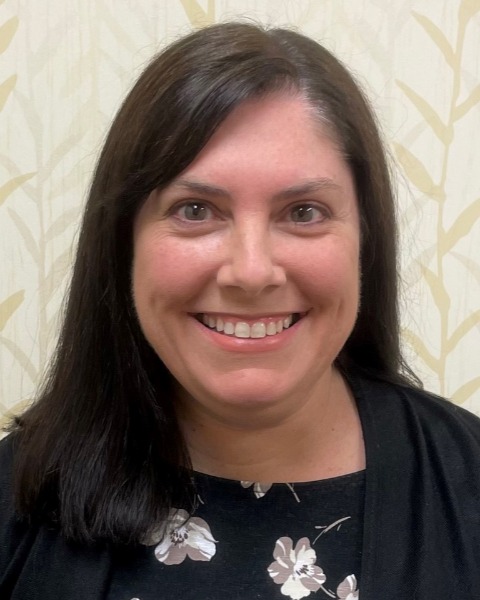Genetics
Poster Session 4
(989) Maternal and ultrasound characteristics associated with persistence of cell-free DNA from a vanishing twin pregnancy
.jpg)
Lorraine Dugoff, MD (she/her/hers)
Professor, Chief of Reproductive Genetics
University of Pennsylvania
Philadelphia, PA, United States
Katherine Kohari, MD
Assistant Professor
Yale New Haven Hospital
New Haven, CT, United States- TA
Tracy Adams, DO
Winthrop University Hospital
Mineola, NY, United States - JS
Jessica Scholl, MD
Weill Cornell Medicine
New York, NY, United States - AR
Ashley S. Roman, MD, MPH
MFM Division Director
NYU Langone Health
New York, NY, United States - JB
Jill Berkin, MD
Icahn School of Medicine at Mount Sinai
New York, NY, United States - JH
Joseph Hurt, MD, PhD
University of Colorado, School of Medicine
Aurora, CO, United States - JC
Jane Chueh, MD
Director, Prenatal Diagnosis
Stanford
Menlo Park, CA, United States - SW
Samuel Wolf, DO
Emerald Coast Obstetrics and Gynecology
Panama City, FL, United States 
Kelly Gorman, MD
Fellow
University of Kansas Health System
Kansas City, KS, United States- KP
Kristy Palomares, MD
Attending Physician
St. Peter's University Hospital
New Brunswick, NJ, United States - MW
Myra Wick, MD
Mayo Clinic
Rochester, MN, United States - AA
Abdulla Al-Khan, MD
Hackensack UMC - Hackensack Meridian School of Medicine
Hackensack, NJ, United States - ZA
Zeynep Alpay Savasan, BS, MD
Beaumont Health
Southfield, MI, United States 
Ronald J. Wapner, MD (he/him/his)
Professor of OBGYN; Director of Reproductive Genetics
Columbia University Irving Medical Center
New York, NY, United States- JL
Jeff M. Livingston, MD
Cedar Health Research
Dallas, TX, United States - BP
Brittany Prigmore, MS
Natera, Inc.
Austin, TX, United States - EA
Ebad Ahmed, PhD
Associate Director, Data Science
Natera, Inc.
Austin, TX, United States - AB
Anastasia Butskova, MS
Natera, Inc.
Austin, TX, United States - ME
Melissa Egbert, MS
Natera, Inc.
Austin, TX, United States - SV
Sophia Vourthis, MPH
Natera, Inc.
Austin, TX, United States 
Meredith Rochon, MD (she/her/hers)
Chief, Division of Maternal-Fetal Medicine
Lehigh Valley Hospital
Allentown, PA, United States
Vivienne Souter, MD
Research Director, Obstetrical Care Outcomes Assessment Program
Foundation for Health Care Quality
Seattle, WA, United States
Primary & Presenting Author(s)
Coauthor(s)
Vanishing twins (VTs) occur in up to 30% of early twin pregnancies and are associated with increased fetal aneuploidy and challenges for aneuploidy screening in the living twin (LT). These include potential for inaccurate cell-free (cf)DNA results due to a persistent cfDNA signal from the VT for up to 15 weeks. We sought to identify maternal and ultrasound (US) characteristics associated with persistence of cfDNA from a VT.
Study Design:
Planned secondary analysis of data from a prospective study of VTs at 17 centers between August 2021 – February 2023 aimed to develop a cfDNA algorithm for the LT in pregnancies with a LT and a VT. Monochorionicity, use of a donor egg, or iatrogenic fetal demise were excluded. SNP-based cfDNA screening at ≥9 weeks’ gestation evaluated the presence of one or two distinct sets of fetal alleles (signals). Univariate analysis was used to compare maternal and US characteristics among patients with one fetal signal, two fetal signals, or no-call results. Multivariable logistic regression was used to account for confounding.
Results:
Of 101 VT pregnancies, 42 had 1 fetal signal, 49 had 2, and 10 could not be determined due to very low fetal fractions . Median maternal age was 34.4 years and 20% conceived with assistance (IVF, ovulation induction and/or intrauterine insemination). Median GA of the LT at VT diagnosis was 9.4 weeks and median GA at cfDNA screening was 13 weeks. A non-viable fetus was visible in 54 and an empty sac in 47 cases (Table 1). Detection of two signals was associated with increasing GA at VT diagnosis (aOR = 1.66; 95%CI 1.19-2.49), a visible non-viable fetus on US (aOR = 3.48, 95%CI 1.05-12.60) and assisted conception (aOR = 6.10; 95%CI 1.19-47.50).
Conclusion:
Persistence of a second fetal signal was present in approximately half of VT pregnancies in our study and was more common with assisted conception, VT diagnosis after 8 weeks’ gestation, cfDNA within 3 weeks of VT diagnosis, and a visible non-viable fetus on US. This information may be helpful in optimizing timing of cfDNA screening in pregnancies with a VT.

